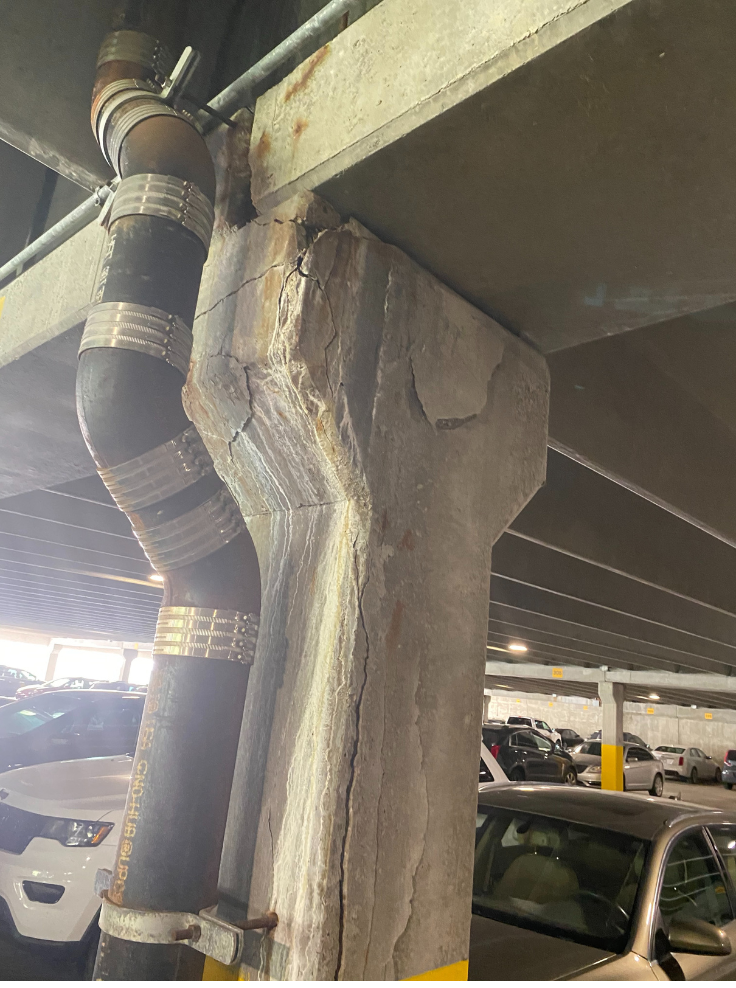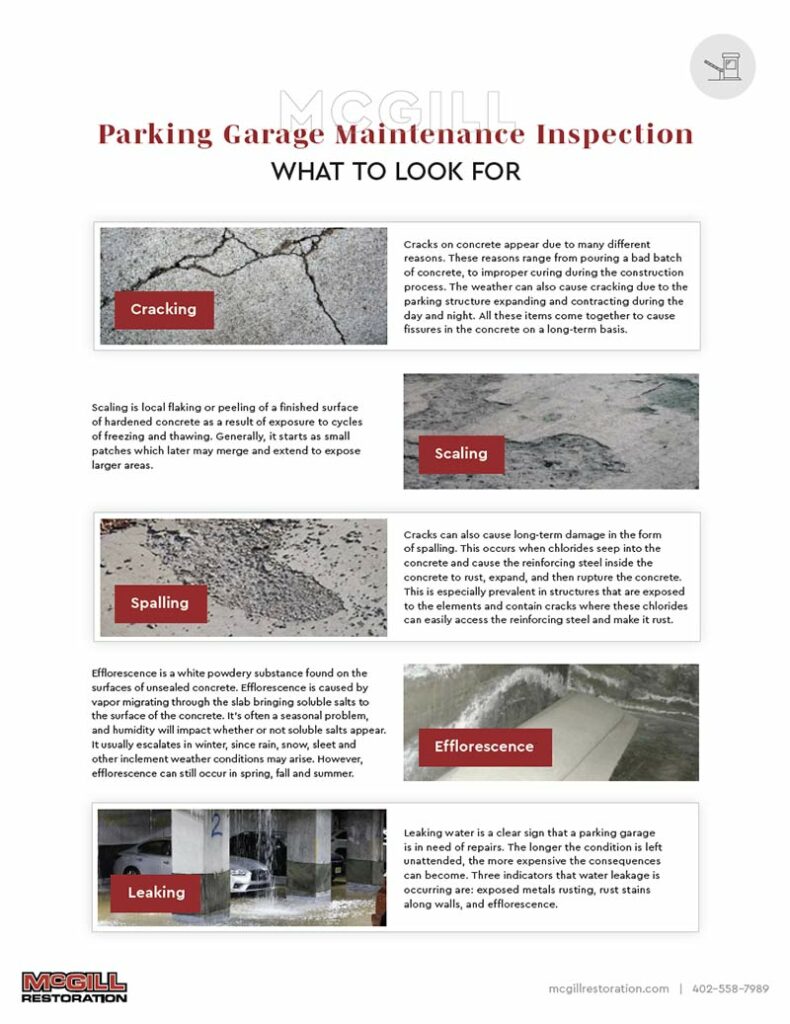Commercial structure owners should consider regular assessments to understand the condition of their investment. Ignoring key signs of early deterioration can lead to greater problems and put the structure at risk of closure.
Learning to assess your structure and monitor for weaknesses can mitigate future repair costs. Identifying issues and solving problems early is one of the best strategies ownership can take to protect their investment.
Cost Analysis for New Construction vs. Restoration
Pricing is unpredictable right now and pinning down exact figures is not easy. That said, it’s roughly $3,500 per parking stall for new construction (2019) and with increases in steel prices, new construction costs have an upward trajectory.
Pricing jobs depends on the type of structure but with anything having a heavy steel component, prices are soaring. Preserving and restoring existing steel is cost-effective but must be done through annual maintenance and regular checkups to prevent excessive corrosion and section loss.
These are the common types of structures and elements within structures that are worth noting for owners conducting internal assessments.
Cast in Place – This structure style is more expensive to build but it also has greater engineered protection against water intrusion. Thick slabs and fewer joints help increase longevity, making the initial expense worthwhile for many owners. Like any structure, it still requires maintenance to wash away corrosive chemicals and maintain the critical joints where water can enter.
Double Tee – This common construction style is cost-effective and durable. The columns and slabs are pre-cast and installed, creating more joints and connecting segments than a cast-in-place structure. The double tee building style can last for a very long time but monitoring and maintaining joint sealants, traffic coatings, and waterproofing elements is essential. With poor maintenance, the need for extensive and costly restoration work increases.
PT Cable Garages – On the lower end of upfront construction costs are PT cable garages. Less concrete is used in the overall structure and that reduces the cost to build. It also increases the exposure of steel elements, making maintenance very important. Restoration costs are high when maintenance programs fail to stop water entry and contact with corrosive chemicals.
Assessing the Physical Elements
After determining the style of structure, assess the physical elements to know where damage is common. Visual inspections can quickly identify the current condition and help to determine if a professional assessment is needed.
Our Parking Garage Maintenance Inspection Checklist is also an invaluable resource to print and carry through your self-inspection.
Structural Beams and Columns as Indicators of Distress
Although these are prominent fixtures in your parking structure, they also act as a canary in the coal mine of sorts. When columns and beams have visible staining from water, cracked concrete, and corroding steel, it’s an obvious sign of pervasive water entry. Consult a professional at this point to accurately assess the points of entry and existing damage.
Inspecting Joint Sealants
If water is causing damage to the structure, it very likely began from one or more failing joint sealants. These are among the most important elements in your structure. Inspect and renew joint sealants as part of your annual maintenance plan. When they pull away from the corners and lose cohesion, water entry is likely. Here’s an easy guide to inspecting and renewing joint sealants.
Horizontal Surfaces and Overhead Condition
These areas receive less attention because they are flat and out of line of sight. Look up and look down to identify the wear and tear on these surfaces. Traffic coatings and joint sealants apply to many of those horizontal surfaces and may require renewal.
Exposure to Chemical Properties
Parking structures are in constant contact with chemicals and when chlorides accumulate, corrosion and rust follow soon after. Look for discoloration or concrete spalling to identify corroding steel. It’s often distributed with dirt and normal-looking elements from the road and environment, however. Pressure washing your structure is the best way to stay ahead of chemical-caused damage from chlorides in road salts.
Look at our Parking garage maintenance best practices to stay ahead of chemical damage and other common issues.
Often Overlooked Drainage Issues
Drainage rarely enters the conversation because it’s not structural and problems are not always obvious. Drainage pipes built into the structure are important for moving water away from the building. Site drainage is also something to consider when assessing threats to your structure.
Why Your Annual Budget Should Include Maintenance
Look to the City of Omaha as a great example of parking garage maintenance planning. Their garages are in great shape and have longevity because they invest in bi-annual washings to remove chemicals and corrosive elements rather than letting them sit and slowly deteriorate.
Building an annual budget to include basic maintenance like power washing can extend the life of your structure and reduce the costs associated with major restoration work or even worse, demolition and new construction. Next time you complete a parking garage assessment, consider the maintenance best practices that will keep your structure in great shape.
Are you ready for a professional assessment?
Get in touch with McGill Restoration to inspect and guide cost-effective maintenance and restoration efforts on your commercial structure.



